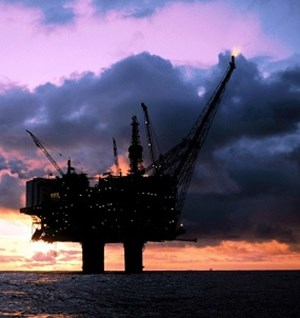Norwegian oil, gas companies pursuing Barents Sea natural gas exploration should leave “no stone unturned”
(Bloomberg) – Oil and gas companies, such as Equinor ASA and Var Energi ASA, should “leave no stone unturned” in expanding their resources in the Barents Sea region as Norway looks to future-proof its position as key energy supplier to Europe.
“The Barents Sea is like a kind of little brother, but when we look into the future at the resource potential that is out there, it could be a big brother on the Norwegian continental shelf in the future,” Petroleum and Energy Minister Terje Aasland said in Hammerfest on Wednesday. The industry has collective responsibility, and “that means leaving no stone unturned to find more gas in the Barents and that work on expanding export capacity continues.”
Norway is now Europe’s biggest supplier of natural gas after the outbreak of the war in Ukraine, and its petroleum producers are keen for new acreage in the Barents to offset an expected decline in output in a few years. A handful of exploration successes in recent months near the Goliat and Johan Castberg fields have revived interest in the region and could attract new investment, though there are still too few wells being drilled, said Torgeir Stordal, the head of Norway’s petroleum directorate.
“It will be important to follow up the positive exploration results we’ve had, but we still need to explore more, both near fields we know well and that are less familiar,” Stordal said, adding that a new export pipeline could incentivize more drilling.
A pipeline is the most economic and realistic option for boosting exports from the Barents, according to a March 17 report from Gassco, whose 8,300-kilometer network of pipes supply Norwegian gas to continental Europe and the UK. Capacity is maxed out until around 2040 at Equinor’s liquefied natural gas (LNG) facility on Melkoya near Hammerfest, which processes gas from the region’s Snohvit field.
“The question is how to arrange the infrastructure here so you can access the full potential of the Barents Sea,” Gassco CEO Frode Leversund said.
The Barents is estimated to hold more than 60% of Norway’s undiscovered resources, according to the NPD. The energy ministry in January proposed adding 92 exploration blocks to those available under the so-called predefined area licensing round for 2023 in the Norwegian and Barents seas.
There has long been excitement about what Norway’s High North might hold, but so far successes have been few and far between, with only the Snohvit and Goliat fields producing in the region. Producers there would have to make substantial finds to justify the expense of developing an area that lacks the energy infrastructure of the North Sea.
“In the past when we have looked at this, we’ve concluded that it isn’t economic,” Petoro CEO Kristin Kragseth said, speaking about a pipeline. “Still, there is a lot going on, so if we move forward with this, maybe it will turn. And the last year has shown us how important the gas is for Europe and the world.”



